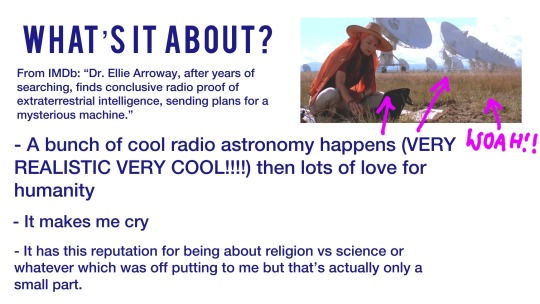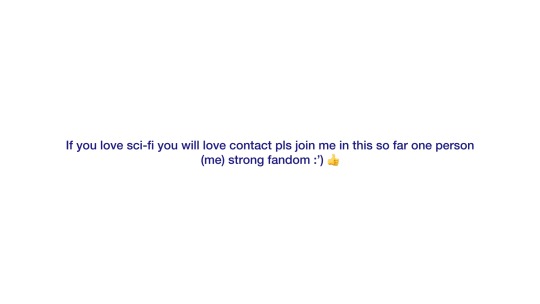#Radio Astronomy;
Explore tagged Tumblr posts
Text
https://ui.adsabs.harvard.edu/abs/1993ApJ…415..218H/abstract
Five Years of Project META: an All-Sky Narrow-Band Radio Search for Extraterrestrial Signals
Horowitz, Paul
Sagan, Carl
Abstract:
We have conducted a five-year search of the northern sky (delta between 30 and 60 deg) for narrow-band radio signals near the 1420 MHz line of neutral hydrogen, and its second harmonic, using an 8.4 x 10 exp 6 channel Fourier spectrometer of 0.05 Hz resolution and 400 kHz instantaneous bandwidth. The observing frequency was corrected both for motions with respect to three astronomical inertial frames, and for the effect of Earth's rotation, which provides a characteristic changing Doppler signature for narrow-band signals of extraterrestrial origin. Among the 6 x 10 exp 13 spectral channels searched, we have found 37 candidate events exceeding the average detection threshold of 1.7 x 10 exp -23 W/sq m, none of which was detected upon reobservation. The strongest of these appear to be dominated by rare processor errors. However, the strongest signals that survive culling for terrestrial interference lie in or near the Galactic plane. We describe the search and candidate events, and set limits on the prevalence of supercivilizations transmitting Doppler-precompensated beacons at H I or its second harmonic. We conclude with recommendations for future searches, based upon these findings, and a description of our next-generation search system.
Publication:
Astrophysical Journal v.415, p.218 Pub Date: September 1993 DOI: 10.1086/173157
#Extraterrestrial Intelligence;#Narrowband;#Radio Astronomy;#Sky Surveys (Astronomy);#Line Spectra;#Radio Spectra;#Space Sciences (General);#EXTRATERRESTRIAL INTELLIGENCE;#RADIO LINES: GENERAL
0 notes
Text

Dr. Petroff has also shown that the Higgs boson signal was actually sparks from someone microwaving grapes, the EHT black hole photo was a frozen bagel someone left in too long, and the LIGO detection was just someone slamming the microwave door too hard.
Fast Radio Bursts [Explained]
Transcript Under the Cut
[Cueball standing behind a lectern, with a poster hung from the ceiling behind him] Potential sources of fast radio bursts: (1) Energetic stellar-sized astrophysical objects floating in space Cueball: We're pretty sure this is what most of them are.
(2) Microwave ovens in the observatory break room Cueball: This was definitely some of them, oops. (Petroff et. al., 2015)
(3) Energetic steller-sized microwave ovens floating in space Cueball: We think this one is unlikely.
(4) Energetic stellar-sized astrophysical objects in the observatory break room Cueball: This is almost certainly not it, though we're sending a grad student to double-check.
1K notes
·
View notes
Text
Every day, invisible to the human eye, thousands of enigmatic flashes of cosmic energy known as fast radio bursts (FRBs) erupt across the sky, releasing as much energy in milliseconds as the sun does in a day. Thanks to their fleeting nature, scientists have often had to rely on luck just to observe FRBs, let alone pinpoint where they come from or what causes them to behave the way they do. Now, astronomers led by Kritti Sharma at the California Institute of Technology posit that such energy-packed light flashes tend to occur in massive, star-forming galaxies from powerful eruptions of rare, long-dead stars known as magnetars. These findings, the researchers say, also point to magnetars themselves being cosmic fusions of two stars, pinning down one potential formation pathway for the mysterious objects.
Continue Reading.
71 notes
·
View notes
Text

The Radio Sky: Tuned to 408MHz - November 26th, 1996.
"Tune your radio telescope to 408MHz (408 million cycles per second) and check out the radio sky! In the 1970s, large dish antennas at three radio observatories, Jodrell Bank, MPIfR, and Parkes Observatory, were used to do just that - the data was combined to map the entire sky. Near this frequency, cosmic radio waves are generated by high energy electrons spiraling along magnetic fields. In the resulting false-colour image, the galactic plane runs horizontally through the center, but no stars are visible. Instead, many of the bright sources near the plane are distant pulsars, star forming regions, and supernova remnants, while the grand looping structures are pieces of bubbles blown by local stellar activity. External galaxies like Centaurus A, located above the plane to the right of the center, and the LMC (below and right) also shine in the radio sky."
26 notes
·
View notes
Photo

Yinglet Commission #9: Abyss
A recent and increasingly relevant fixture within astronomy circles, Abyss is a credit to zher field of research! Zhi can be found, uh -- (looks around) -- Oh! Up there This is a commission! Closed as of this writing, but I'm making my way thru the queue. Details can be found here! Timelapse - Patreon - Ko-fi Abyss belongs to zherself (and I'd like to give zher a special credit for helping me get a handle on the Beizel-style "pointy" yinglet shape) The yinglet species (and its natural compatibility with scaffolded surfaces) was created by Valsalia
34 notes
·
View notes
Text









I felt I had to do my duty to promote my favourite film!!!!! It’s so so so fucking amazing. I’m ill rn so sorry this is kinda shite but GO WATCH CONTACT NOW!!!!
#contact 1997#contact film#astronomy#radio astronomy#astrophysics#space#aliens#sci-fi#scifi films#scifi film recs
98 notes
·
View notes
Text
And here's how I imagine Luca and Alberto as older teens >>
I know for sure one of Luca's favorite things to do would be just chillin and reading. Luca would love and know a lot about astronomy. When Alberto learns sports exist, he'd definitely love it, specifically soccer!! (Since it's applied in the movie that they don't know about sports) Alberto would definitely be the dude that accidentally hits someone in the head with the ball 💀



#luca#lucapaguro#luca 2021#luca paguro#luca lucapaguro#luca pixar#pixar luca#albertoscorfano#alberto#alberto scorfano#luberto#luca is reading the basic of astronomy#alberto is listening to a soccer game on the radio
99 notes
·
View notes
Text




Owens Valley Radio Observatory, California
229 notes
·
View notes
Text

The radial magnetic field around NGC 4631 (Golla and Hummel 1994)
#astrophysics#astroblr#radio astronomy#interstellar medium#magnetic field#physicsblr#extragalactic astrophysics
267 notes
·
View notes
Text

Commission for @foxgirlchorix of a foxgirl robot with just, like, absolutely MASSIVE radio telescope ears.
#commission#amateur astronomy#i might not do furry art on my own time but i will draw it if you pay me!#radio telescope#telescope#dobsonian telescope#astronomy#foxgirl#fox girl#robot girl#robotgirl#foxgirl robot#furry art#sfw furry art#furry#whirry
135 notes
·
View notes
Text
"NGC 1068 is a well-known, relatively nearby, bright galaxy with a supermassive black hole at its center. Despite its status as a popular target for astronomers, however, its accretion disk is obscured by thick clouds of dust and gas. A few light-years in diameter, the outer accretion disk is dotted by hundreds of distinct water maser sources that hinted for decades at deeper structures.
Masers are distinct beacons of electromagnetic radiation that shine in microwave or radio wavelengths; in radio astronomy, water masers observed at a frequency of 22 GHz are particularly useful because they can shine through much of the dust and gas that obscures optical wavelengths."
"Mapping the astrometric distribution of NGC 1068 and its water masers revealed that they are spread along filaments of structure. "It really came out in these new observations, that these filaments of maser spots line up like beads on a string," Gallimore summarized.
The team was stunned to see that there's a clear offset—a displacement angle—between the radio continuum showing the structures at the galaxy's core and the locations of the masers themselves. "The configuration is unstable, so we are probably observing the source of a magnetically-launched outflow."
HSA measurements of the polarization of these water masers revealed striking evidence of magnetic fields. "No one has ever seen polarization in water masers outside of our galaxy," Gallimore emphasized. Similar to the looping structures seen on our sun's surface as prominences, the polarization pattern of these water masers clearly indicates that magnetic fields are also at the root of these light-year-scale structures as well.
"Looking at the filaments, and seeing that the polarization vectors are perpendicular to them, that's the key to confirming that they are magnetically driven structures. It's exactly what you'd expect to see," Gallimore summarizes."
continue reading
#astronomy#magnetism#black holes#energy#electromagnetism#radiation#wavelength#frequency#galaxy#magnetic field#microwaves#radio wavelengths#universe#scaling#polarization#magnetic loops#water masers#science
8 notes
·
View notes
Text
Space is a near-perfect vacuum, but it’s not entirely empty. A small list of matter include :
a few hydrogen atoms here and there (less than one hydrogen atom per cubic meter)
Dark Matter — an enigma that was recently discovered in the 20th century. It doesn’t interact with the normal matter that we’re used to (eg. solid, gas, liquid). We can’t see it since it doesn't interact with light or any electromagnetic radiation. However, it does exist and makes up about 27% of the universe.
Neutrinos — neutral subatomic particles with little mass and no electric charge. They’re from atoms that come together (nuclear fusion) or break apart (nuclear fission)
Electromagnetic radiation and magnetic fields
There are other things that exist in outer space but they’re usually not normal matter and don’t make space very dense at all. It’s okay because space is never truly empty but it can still be very close to empty, making it a far better vacuum than the best ones we can make on earth.
This is not an issue for electromagnetic waves (like light and radio waves) that can travel through space unhindered because they don’t need any medium to propagate.
Sound waves are different since they're mechanical waves, which is just vibrating matter. Hence, they need a medium to travel through to be heard. In space there is no air or medium for sound waves to travel through. This means that no one can hear you scream in space :)
#physics#astronomy#outer space#science#space#stem#galaxy#universe#astronauts have speakers in their suits that convert sound into radio waves so they’re good#existential thoughts#thoughts#ramblings#rambles#density#cosmos#space exploration#matter#dark matter#neutrino#waves#soundwave#electromagnetism#electromagnetic fields
34 notes
·
View notes
Text
Fast radio bursts (FRBs) are sudden and intense blasts of radio wave energy from deep space that remain one of the most intriguing mysteries in astrophysics, and a new study adds valuable insight into what might be generating them. Led by a team from the Italian National Institute for Astrophysics (INAF), researchers looked at FRB 20201124A, first discovered in 2020. Specifically, they analyzed a persistent radio source (PRS) near the FRB.
Continue Reading.
61 notes
·
View notes
Text

The Dawn of the Clusters - January 15th, 1996.
"What did the Universe look like near the beginning? This exciting photo by the Hubble Space Telescope was one of the deepest ever taken, and shows galaxies as far away as ever before photographed. The Universe back then - when only one third of its present age - was a strange and violent place. Back then, a large fraction of galaxies were colliding and interacting. In fact, the shapes of many galaxies in the above photo are more distorted than most nearby galaxies. At this early Universe epoch, many clusters of galaxies were just forming. The bright twisted group of galaxies below the photograph's center contains the energetic radio galaxy 3C324."
54 notes
·
View notes
Text

An artist's illustration of the longest black hole jet system ever observed. Nicknamed Porphyrion after a mythological Greek giant, these jets span roughly 7 megaparsecs, or 23 million light-years. That is equivalent to lining up 140 Milky Way galaxies back-to-back.
Porphyrion’s jets are estimated to contain the total power of trillions of suns and raise the temperature of surrounding gas by a million degrees Celsius. This means they may have inhibited the formation of not just stars but entire galaxies in the early universe. Their high-speed sprays of magnetized ejecta also could have pierced and filled voids in the cosmic web, the network of matter-rich filaments and matter-sparse cavities that forms the universe’s large-scale structure.
To better assess the impact such jets may have had on the early universe, researchers will need to create a more comprehensive catalog of the structures. The new study surveys just 15 percent of the sky, possibly leaving many more jets yet to be discovered.
E. Wernquist/D. Nelson (IllustrisTNG Collaboration)/M. Oei (CC BY-NC-ND)
#black hole#black hole jet#Porphyrion#23 million light years#7 megaparsecs#140 million Milky Way galaxies#science#astronomy#scientificamerican#physics#Low Frequency Array (LOFAR)#Giant Metrewave Radio Telescope in India#W. M. Keck Observatory in Hawaii#Martijn Oei#astronomer#California Institute of Technology#E. Wernquist#D. Nelson#M. Oei#IllustrisTNG#astrophysics
7 notes
·
View notes
Photo

Hubble Finds Weird Home of Farthest Fast Radio Burst - NASA Science
Astronomers using NASA's Hubble Space Telescope have found a rare event in an oddball place.
It's called a fast radio burst (FRB), a fleeting blast of energy that can – for a few milliseconds – outshine an entire galaxy. Hundreds of FRBs have been detected over the past few years. They pop off all over the sky like camera flashes at a stadium event, but the sources behind these intense bursts of radiation remain uncertain.
This new FRB is particularly weird because it erupted halfway across the universe, making it the farthest and most powerful example detected to date.
And if that's not strange enough, it just got weirder based on the follow-up Hubble observations made after its discovery. The FRB flashed in what seems like an unlikely place: a collection of galaxies that existed when the universe was only 5 billion years old. The large majority of previous FRBs have been found in isolated galaxies. ...
30 notes
·
View notes